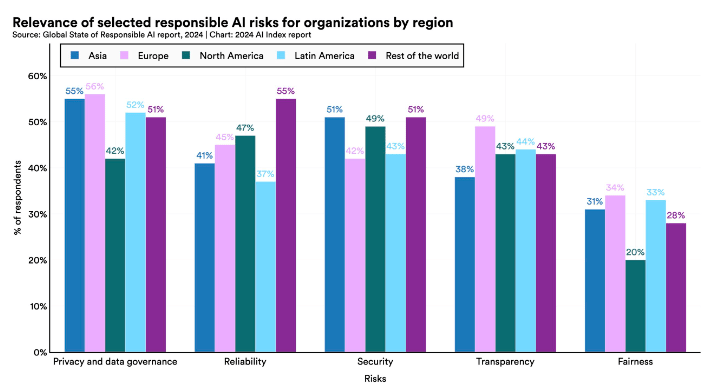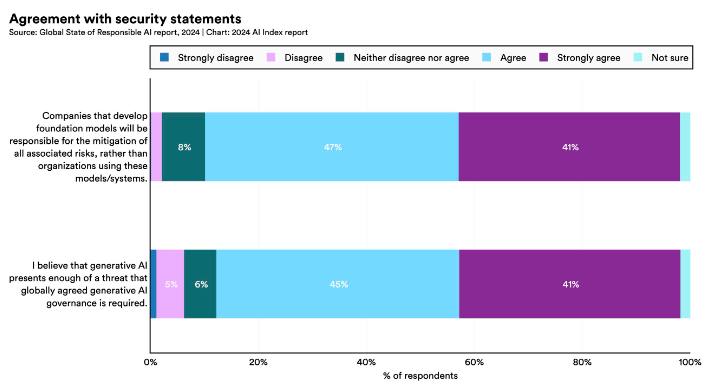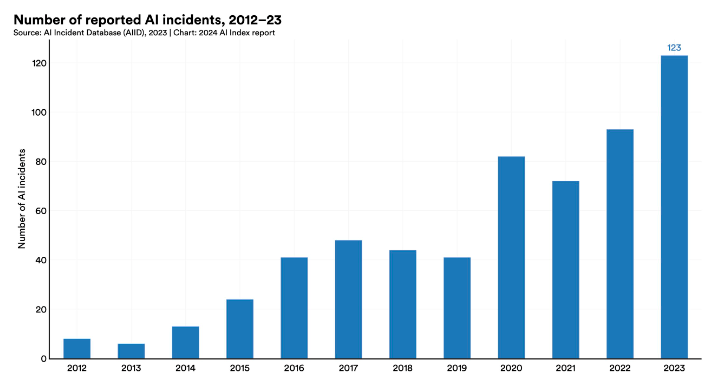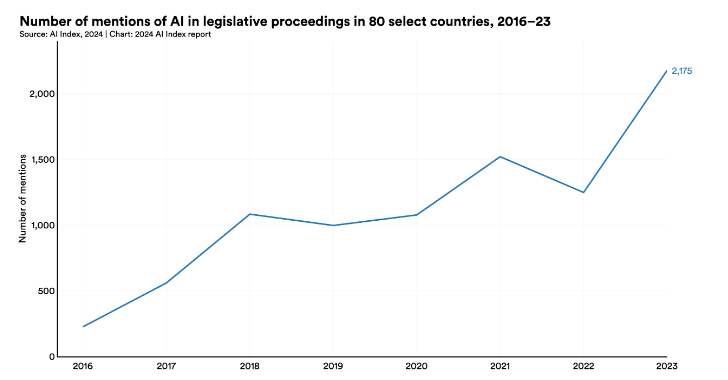- The AI Strategist
- Posts
- 5 charts that explain the top AI Risks
5 charts that explain the top AI Risks

I recently dived into the very insightful 2024 AI Index Report from Stanford University, which provides a comprehensive analysis of the current landscape of artificial intelligence. The report is well worth a read but in case you’re short of time, I've distilled five key risks with AI that business leaders should be aware of as they consider integrating AI into their operations. Let’s dive in.
1: Privacy and data governance weighs heavy on everyone’s minds.
Given that AI systems are fundamentally dependent on data to function, the vast amounts of data collected and processed raise significant concerns about the protection of personal information and sensitive corporate data. Not only is data protection of utmost concern, there is also the question of what might constitute ethical and legitimate use of customer data.
2: Extreme AI risks can be difficult to analyze
While much discussion has centered on the existential risks posed by generative AI, pinpointing which risks should be prioritized by policymakers is not straightforward. For instance, if the responsibility for risk mitigation primarily falls on the developers of foundational models, could imposing liability on them discourage innovation and slow the pace of development?
3: Expect the number of reported AI incidents to keep going up
From biased and malfunctioning algorithms to misinformation campaigns and incidents involving autonomous vehicles, the number of AI incidents is expected to only increase over time. If anything, for all the wonderful applications of Generative AI being touted in popular media, reading just how often things actually go wrong around the world can be sobering. Check out the AI Incident Database for more information.
4: The tsunami of AI regulations might arrive sooner rather than later
It’s no real surprise to learn that governments are actively considering and potentially implementing AI regulations. However, if each country introduces its unique set of AI laws and regulations, businesses operating internationally could face a regulatory nightmare. Navigating diverse regulations will be complex, burdensome, and costly, requiring companies to adapt their AI technologies and compliance strategies differently for each jurisdiction. Such a scenario would not only increase operational costs but also complicate the deployment and scaling of AI solutions across borders, potentially stifling innovation and growth in the AI sector. This only make early AI adoption all the more risky, understandably leading some leaders to adopt a wait-and-see approach.
5: Your employees are probably very nervous about AI replacing them
If you’re thinking about adopting AI to boost productivity, you might also have a responsibility to focus on change management and proactive re-skilling initiatives for your employees. Doing so can help alleviate fears and help ensure that employees remain valuable assets as your business evolves. This will not only mitigate resistance to change but also enhance employee engagement and retention, making your AI adoption initiatives more inclusive and sustainable.
BONUS: Use of Generative AI might raise copyright issues.
No explanation needed here, right?

We explain the latest business, finance, and tech news with visuals and data. 📊
All in one free newsletter that takes < 5 minutes to read. 🗞
Save time and become more informed today.👇
Thank you for reading.
Hardesh.





